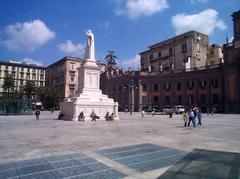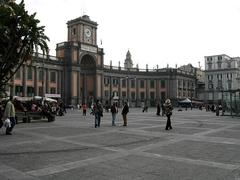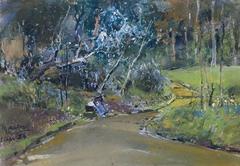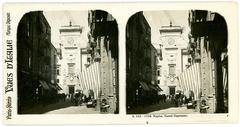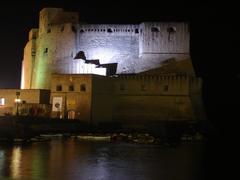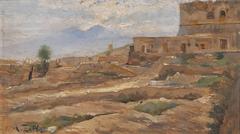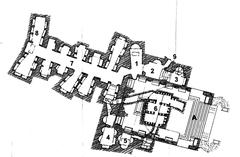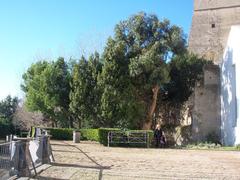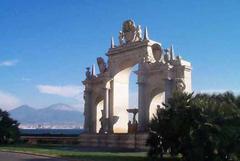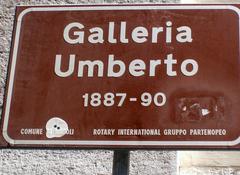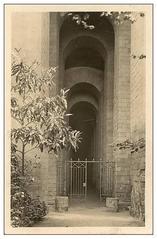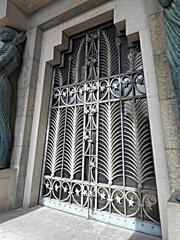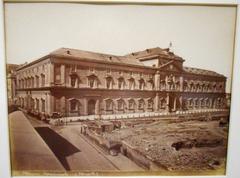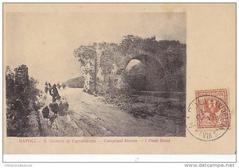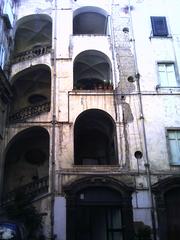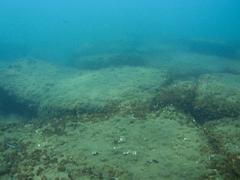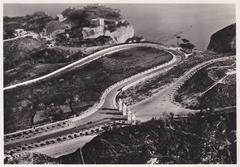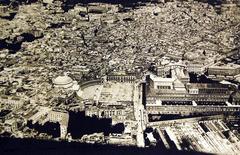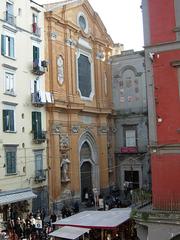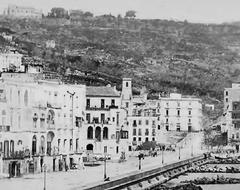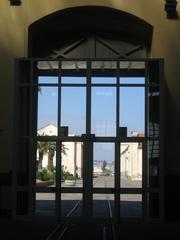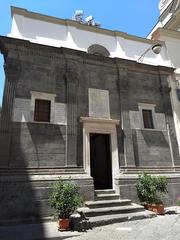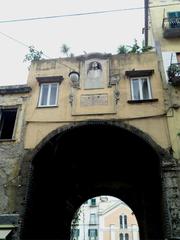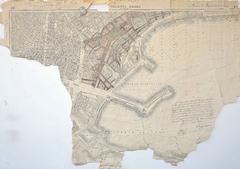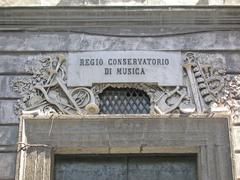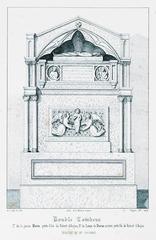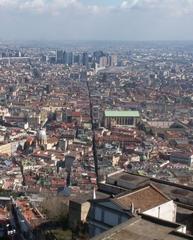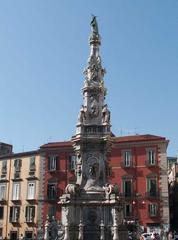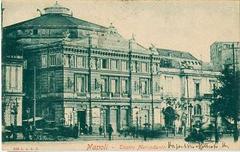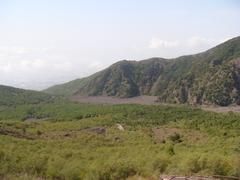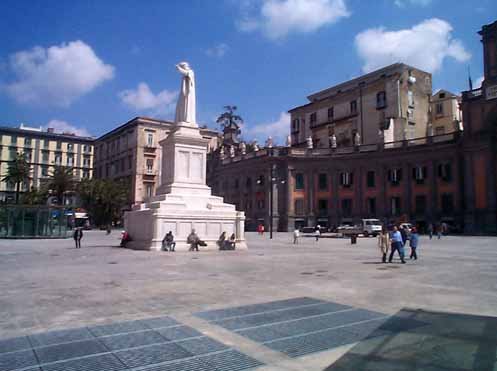
Piazza Dante Naples: Visiting Hours, Tickets, and Historical Sites Guide
Date: 15/06/2025
Introduction
Piazza Dante is one of Naples’ most emblematic and dynamic public spaces, offering visitors a unique fusion of history, culture, and urban vibrancy. Situated at the western edge of the historic center, this semi-circular piazza was designed in the 18th century by Luigi Vanvitelli under the reign of Charles III of Bourbon. Its architecture bridges Baroque and Neoclassical styles, epitomized by a grand exedra of 26 Ionic columns and the monumental marble statue of Dante Alighieri installed in 1871—an enduring symbol of Italian unification and Naples’ intellectual heritage (Napolike; Visit Naples).
Beyond its architecture, Piazza Dante acts as a vibrant cultural crossroads, connecting major arteries like Via Toledo and Port’Alba, the latter famous for its historic bookshops and literary cafés. The Dante metro station, part of the acclaimed Metro dell’Arte project, enriches the visitor experience with contemporary art installations, seamlessly blending Naples’ storied literary past with modern creativity (Nomads Travel Guide; The Best Naples).
This guide provides comprehensive information on visiting hours, accessibility, nearby attractions, travel tips, and historical context to help you fully appreciate the enduring charm and significance of Piazza Dante (Naples Insider; Naples Wise).
Table of Contents
- Introduction
- History and Urban Evolution
- Architectural Highlights
- Cultural Significance and Social Life
- Notable Events and Modern Developments
- Visiting Information
- Nearby Attractions
- Gastronomy and Local Traditions
- Visuals and Media
- Frequently Asked Questions (FAQ)
- Conclusion and Recommendations
- References
History and Urban Evolution
Piazza Dante was originally conceived as the Foro Carolino in the mid-18th century, part of Charles III of Bourbon’s vision for urban renewal inspired by Enlightenment ideals (Napolike). Luigi Vanvitelli’s 1757 design introduced the concept of an “urban void”—an open civic space framed by a semi-circular colonnade of 26 Ionic columns. Strategically positioned at the confluence of Via Toledo, Via dei Tribunali, Port’Alba, and Porta dello Spirito Santo, the square became a gateway between the historic core and the expanding modern city (Visit Naples).
Architectural Highlights
The Exedra and Portico
The defining architectural element is the grand exedra, designed by Vanvitelli, which elegantly frames the northern edge of the square. Originally intended to host 26 statues representing the virtues of Charles III (only a few were completed), the portico’s classical symmetry is complemented by the backdrop of Naples’ residential skyline (Booking Naples). Behind the colonnade stands the Convitto Nazionale Vittorio Emanuele II, an important educational institution and a key feature of the square’s identity.
The Statue of Dante Alighieri
At the heart of Piazza Dante, the imposing marble statue of Dante Alighieri—crafted by Tito Angelini and Tommaso Solari Jr. in 1871—serves as both a literal and symbolic focal point. The renaming of the square honored Dante and reinforced the piazza’s role as a center of civic and intellectual life (Wikipedia).
Cultural Significance and Social Life
Piazza Dante has long been a vibrant social hub, where residents and visitors gather for everyday activities and special events. Its proximity to Port’Alba, famous for bookshops and literary cafés, cements its status as a crossroads of culture and intellect (The Best Naples). The adjacent Dante metro station, part of the innovative Metro dell’Arte, features art installations by Joseph Kosuth, Jannis Kounellis, and Michelangelo Pistoletto, turning the daily commute into a cultural experience (Nomads Travel Guide).
The square’s pedestrian-friendly design, open-air cafés, and green spaces invite community gatherings, street performances, and lively markets. Seasonal events and festivals, including concerts and art exhibitions, further enhance its dynamic atmosphere (Naples Wise).
Notable Events and Modern Developments
Piazza Dante has been the backdrop for major historical episodes, from revolutionary gatherings during the 1799 Parthenopean Republic to patriotic rallies associated with the Risorgimento. In recent years, restoration efforts supported by UNESCO and the Municipality of Naples have preserved its architectural heritage, improved accessibility, and introduced Limited Traffic Zones to enhance the visitor experience (Visit Naples).
Visiting Information
Hours and Tickets
- Square Access: Open to the public 24/7, free of charge.
- Nearby Monuments: Some churches and museums in the area may require tickets and have specific opening hours; check individual websites for details.
Accessibility
- Wheelchair Access: The square and Dante metro station are accessible, with ramps and elevators available.
- Strollers: Suitable for families, though some adjacent streets have cobblestones.
- Facilities: ATMs, cafés, and shops are available; public restrooms typically in nearby cafés.
Getting There
- Metro: Dante station (Line 1) is directly on the square.
- Bus: Multiple city bus lines connect to the area.
- On Foot: Easily walkable from Via Toledo, Piazza Bellini, and the historic center.
- Taxi: Licensed taxis are available at the square’s edges.
Guided Tours and Events
Several operators offer walking tours that include Piazza Dante and nearby sites such as the National Archaeological Museum and Spaccanapoli. The square regularly hosts concerts, art exhibitions, and open-air events, especially in summer (Napolike).
Nearby Attractions
- Port’Alba: Historic gateway lined with bookshops and cafés.
- Via Toledo: Major shopping and strolling avenue.
- Piazza Bellini: Nightlife, ancient ruins, and vibrant student scene.
- National Archaeological Museum: One of Italy’s top museums, a short walk away.
- Galleria Principe di Napoli: 19th-century arcade with elegant iron-and-glass architecture.
Gastronomy and Local Traditions
Piazza Dante is surrounded by cafés, trattorias, and pastry shops offering authentic Neapolitan cuisine. Street food such as pizza, fried cuoppo, and arancini are local favorites. Café culture thrives here, with many locals gathering for espresso and pastries. Seasonal markets and fairs offer local produce and crafts (Naples Wise; The Best Naples).
Visuals and Media
Visitors can explore high-quality images and interactive tours on official Naples tourism websites. Descriptive alt text, such as “Piazza Dante exedra with Ionic columns,” “Marble statue of Dante Alighieri at Piazza Dante,” and “Entrance to Dante metro station with contemporary art,” ensures accessibility and enhances the online experience.
Frequently Asked Questions (FAQ)
Q: Is there an entrance fee to visit Piazza Dante?
A: No, the square is free and open 24/7.
Q: What are Piazza Dante’s visiting hours?
A: The square is accessible at all times; nearby attractions may have specific hours.
Q: Is Piazza Dante wheelchair accessible?
A: Yes, both the square and the metro station offer step-free access.
Q: How do I reach Piazza Dante by public transport?
A: Take Metro Line 1 to Dante station or use city buses that stop nearby.
Q: Are guided tours available?
A: Yes, many walking tours include Piazza Dante and can be booked via tourism offices or online.
Q: What else is there to see nearby?
A: Port’Alba, Via Toledo, Piazza Bellini, and the National Archaeological Museum are all within walking distance.
Conclusion and Recommendations
Piazza Dante encapsulates Naples’ rich history, architectural beauty, and vibrant social life. Its 18th-century origins, striking neoclassical features, and dynamic cultural scene make it an essential stop for any visitor. The square’s accessibility, free entry, and proximity to key attractions ensure a rewarding experience for all travelers.
For a deeper exploration, consider guided tours and digital tools like the Audiala app, which offers interactive maps and audio guides. Check local event calendars for concerts and exhibitions, and enjoy the area’s culinary and cultural offerings. Whether you’re a history enthusiast, cultural explorer, or casual visitor, Piazza Dante promises an unforgettable window into Naples’ soul.
References
- Napolike: Piazza Dante Naples
- The Best Naples: Piazza Dante Guide
- Visit Naples: Naples’ Urban History
- Nomads Travel Guide: Piazza Dante
- Naples Wise: Naples by Month
- Wikipedia: Piazza Dante, Naples
For official information, visit the Naples Tourism Board and the Municipality of Naples. For more travel guides and insider tips, download the Audiala app and follow us on social media!
